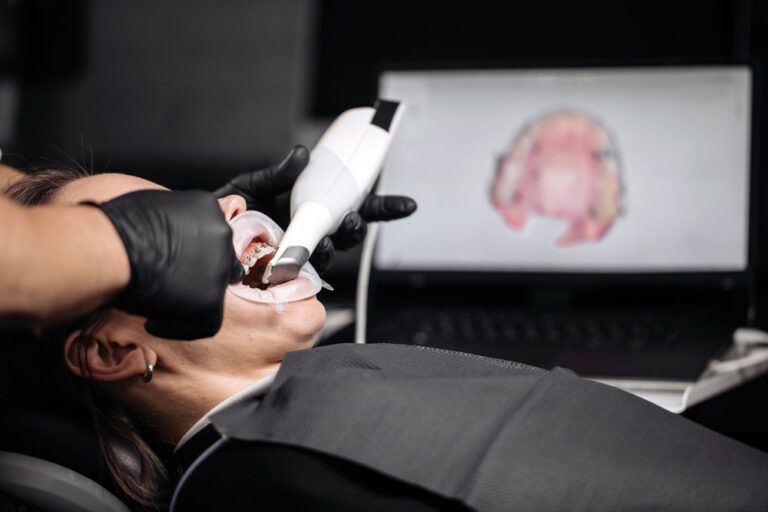The Use of Intraoral Cameras for More Effective Dental Care

At Sunset Dental Group in Santa Ana, CA, dental health innovation is at the forefront of providing patients with the best possible care. One such innovation transforming the dental industry is the use of intraoral cameras. These advanced tools have revolutionized the way dental professionals diagnose, communicate, and treat oral health conditions. Understanding the use and benefits of intraoral cameras provides valuable insight into how modern dentistry is evolving to become more precise and patient-friendly.
Understanding Intraoral Cameras
Intraoral cameras are small, pen-sized devices equipped with tiny, high-resolution cameras that capture detailed images inside the mouth. Unlike traditional dental tools that rely solely on visual examination and X-rays, intraoral cameras provide dentists with a clear, close-up view of teeth, gums, and other oral structures. The images are displayed in real time on a monitor, allowing both the dentist and the patient to see exactly what is happening inside the mouth.
This enhanced visibility is especially important because some dental problems, such as early cavities, cracks, or gum disease, are difficult to detect with the naked eye alone. Intraoral cameras can identify issues at an earlier stage, enabling more effective intervention. Additionally, these cameras improve documentation and tracking of a patient’s oral health over time, facilitating better long-term treatment planning.
Improving Diagnosis and Treatment Accuracy
One of the most significant advantages of intraoral cameras is their ability to improve diagnostic accuracy. Traditional dental examinations rely heavily on manual inspection and X-rays, which may sometimes miss subtle or hidden problems. Intraoral cameras capture detailed images of the mouth’s interior, highlighting areas that might otherwise go unnoticed. For example, the precise visualization of enamel erosion, microfractures, or plaque buildup allows dentists to make more informed decisions.
Moreover, these cameras help in monitoring the progress of treatments such as fillings, crowns, and orthodontics by providing clear before-and-after images. This capability enhances the dentist’s ability to tailor treatments more effectively to the patient’s specific needs, reducing the likelihood of unnecessary procedures or missed conditions. Accurate diagnosis ultimately results in more successful outcomes and improved oral health.
Enhancing Patient Communication and Education
Dental health can often be a source of anxiety or confusion for patients, especially when they are unsure about the extent of their condition. Intraoral cameras bridge this communication gap by visually involving patients in their own dental care. When patients can see clear images of their teeth and gums during the consultation, they better understand the issues and the rationale behind recommended treatments.
This transparency builds trust and encourages patients to take a more active role in their oral health decisions. Dentists can highlight problem areas, explain potential risks, and demonstrate the expected benefits of treatments with visual proof. This interactive approach makes dental visits less intimidating and empowers patients to maintain better oral hygiene practices at home.
Benefits Beyond Diagnosis: Efficiency and Comfort
In addition to improving diagnosis and patient communication, intraoral cameras contribute to a more efficient and comfortable dental experience. The quick capture of images minimizes the need for prolonged manual examinations, reducing patient discomfort. It also streamlines dental workflows, allowing dentists to spend more time discussing care plans rather than probing for hard-to-see issues.
For patients who experience anxiety during dental visits, the visual feedback can provide reassurance and reduce uncertainty. The non-invasive nature of intraoral cameras means there is no radiation exposure, unlike with traditional X-rays, making them a safer option for frequent use when needed. The combination of speed, safety, and clarity makes intraoral cameras a valuable tool in modern dentistry.
Key Advantages of Intraoral Cameras at a Glance
- Early and accurate detection of dental issues
- Improved patient understanding and engagement
- Enhanced documentation for treatment tracking
- Increased comfort and reduced examination time
- Safer imaging without radiation exposure
The Future of Dental Care with Intraoral Cameras
As dental technology continues to advance, the integration of intraoral cameras with other digital tools like 3D imaging and AI diagnostics is becoming more common. These innovations promise even greater precision and personalized care in dentistry. With the ability to capture and analyze comprehensive oral data, future dental treatments will likely be more predictive and preventive.
For dental professionals in Santa Ana and beyond, embracing intraoral camera technology represents a commitment to higher standards of care. It ensures patients receive thorough, clear, and comfortable evaluations that support better oral health outcomes. As awareness and accessibility grow, the use of intraoral cameras will become a standard in delivering modern dental care.
In summary, intraoral cameras offer an invaluable combination of enhanced visualization, improved diagnostic accuracy, and better patient communication. At Sunset Dental Group in Santa Ana, CA, staying informed about these advances underscores the evolving landscape of dental care—one where technology and patient experience go hand in hand for healthier smiles.
Resources
McLaughlin, K. A., & Nolen-Hoeksema, S. (2011). Rumination as a Transdiagnostic Factor in Depression and Anxiety. Behavior Researcher and Therapy.
American Dental Association. (2023). Benefits of Intraoral Cameras in Dentistry. ADA Dental Technology Update.
Smith, R. J., & Johnson, L. M. (2020). Digital Imaging and Diagnostics in Modern Dentistry. Journal of Dental Technology.

Recent Comments